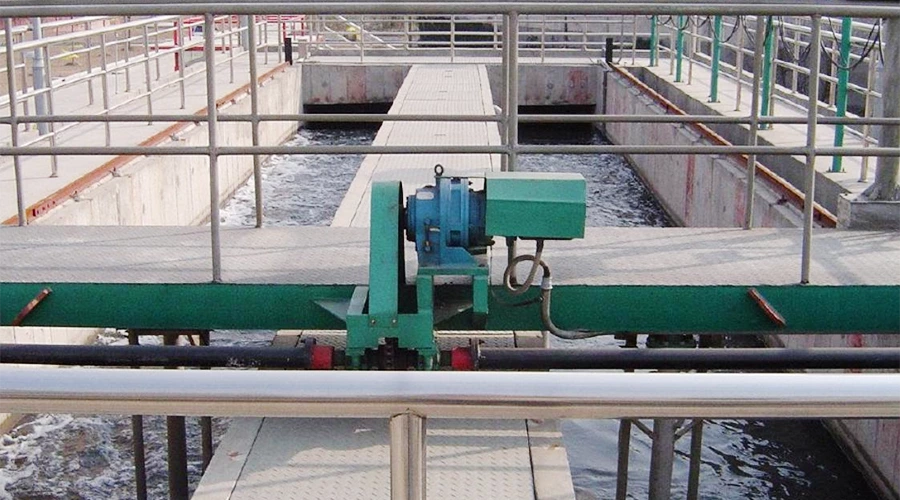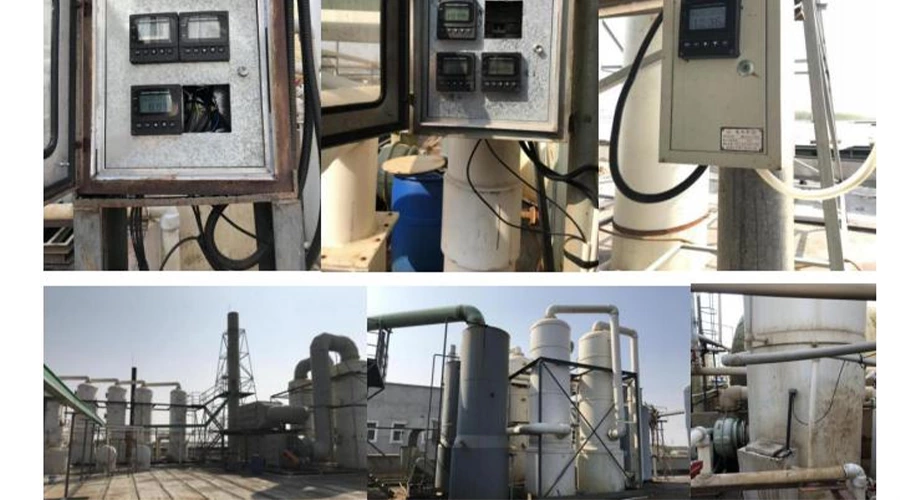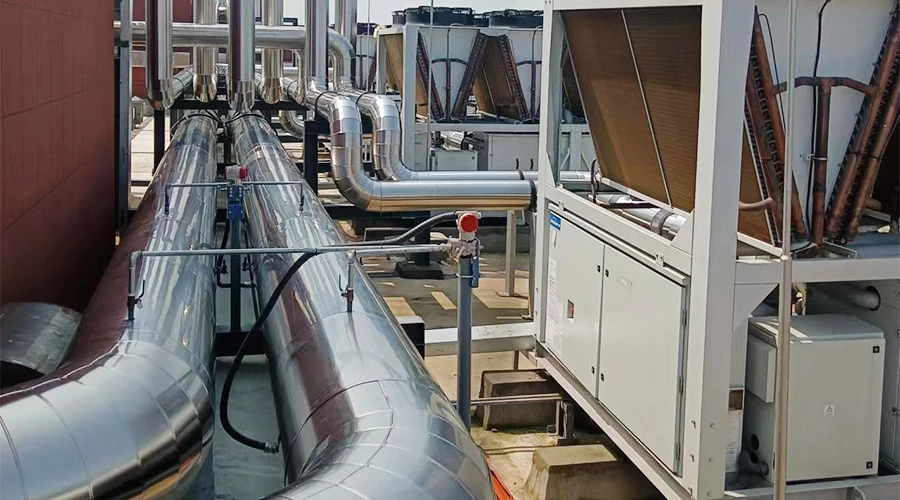Liquid Analysis Transmitters in Sewage Treatment
What is sewage treatment?
According to the classification of sewage sources, sewage treatment is generally divided into sewage treatment and domestic sewage treatment.
According to the nature of water pollution, there are two types of water pollution: one is natural pollution; the other is man-made pollution. At present, man-made pollution is the most harmful to water bodies. Water pollution can be divided into three categories: chemical pollution, physical pollution, and biological pollution according to the different impurities.
Pollutants mainly include:
- Industrial wastewater discharged without treatment;
- Domestic sewage discharged without treatment;
- Farmland sewage where chemical fertilizers, pesticides, and herbicides are used in large quantities;
- Industrial waste and domestic waste piled up by the river;
- Soil erosion;
- Mine sewage.
Sewage treatment: the process of purifying sewage to meet the water quality requirements for discharge into a certain water body or reuse.
Primary treatment - grille
Where does the water come from - In municipal sewage plants, the treated water comes from the urban domestic sewage collected by the underground drainage pipe network - water charges, industrial wastewater - discharge, rainwater, and snowmelt water.
Grille -The written definition of the grille is a pretreatment that traps solid pollutants in a suspended or floating state in wastewater facility.
An ultrasonic level difference meter (material level, liquid level) is used to measure the difference between the liquid level or material level of two different containers. The most common method is to measure the water level before and after the coarse grille and fine grille at the water inlet of the sewage treatment plant and calculate the height of the water level difference, which is used to start the reverse fishing decontamination machine to fish out the garbage. It is also installed before and after the gate to measure the water level difference before and after the gate to determine the time to open the gate.
Primary treatment - sewage lifting pump room
Sewage lift pump
The reason why the centrifugal pump can send water out is due to the centrifugal force. Before the pump works, the pump body and the water inlet pipe must be filled with water to form a vacuum state. When the impeller rotates rapidly, the blades make the water rotate rapidly, and the rotating water flies away from the impeller under the action of centrifugal force, and the water in the pump is After being thrown, the central part of the impeller forms a vacuum area. The water from the water source is pressed into the water inlet pipe through the pipe network under the action of atmospheric pressure (or water pressure). Continuous pumping can be realized by endless circulation like this.
Primary treatment - grit chamber
Function
The grit chamber is mainly used to remove sand particles with a particle size greater than 0.2mm and a density greater than 2.65t/m3 in sewage, so as to protect pipelines, valves, and other facilities from wear and blockage. Its working principle is based on gravity separation, so the water flow rate of the grit chamber should be controlled so that the inorganic particles with large specific gravity sink, while the organic suspended particles can be taken away with the water flow.
Classification
Grit chambers mainly include advection grit chambers, aerated grit chambers, swirl chambers, etc. The main modern design is cyclone grit. The advection grit chamber is a commonly used type, and the sewage flows in the horizontal direction of the pond. The advection grit chamber consists of an inflow channel, an outflow. It is composed of a canal, ram, water flow, and grit bucket. The typical feature of the aeration grit chamber is that an aeration device is installed in the pond.
At present, the swirl grit chambers widely used in the world are mainly Zhong and Bi. From the perspective of the domestic application, Zhong's pond and its winter variants from Europe account for the vast majority.
The bell-type grit chamber uses mechanical force to control the flow state and the flow rate to accelerate the sedimentation of sand particles.

Primary treatment - primary sedimentation tank
Function
The primary sedimentation tank can remove sinkable and floating matter in wastewater. After the primary settling of wastewater, it can remove about 50% of sinkable, grease, and floating matter, and 20% of the BOD. Calculated by removing the unit mass of BOD or solids, the primary settling tank is the most economical purification step. Sewage and industrial sewage with highly suspended solids are easy to be pretreated by primary sedimentation tanks.
Classification
The structure of the primary sedimentation tank is: advection type, radial flow type, vertical flow type, and inclined plate (tube) type.
Secondary treatment - biochemical treatment
Definition
The secondary biological treatment method widely used in urban sewage treatment is the metabolic function of sharp microorganisms to neutralize sewage: organic pollutants in dissolved and colloidal states are degraded and converted into harmless substances so that sewage can be purified
Classification
Activated sludge process; Biofilm process
Typical activated sludge processes include traditional activated sludge process, fully mixed activated sludge process, delayed aeration, pure oxygen aeration, layer aeration, deep well aeration, contact stabilization method, oxidation ditch, active biological Filter (ABF process), adsorption-biodegradation process (AB method), sequencing batch activated sludge process (SBR CASS); typical biofilm methods: BAF, contact oxidation.
Phase 1 - Initial Adsorption and Degradation
Phase 2 - Assimilation and Dissimilation
The third stage - mud and water separation
Indicators of activated sludge:
- Mixed liquid suspended solids (MLSS): between 1500-3500 mg/L.
- Mixed liquor volatile suspended solids (MLVSS): 0.75
- Mixed liquid dissolved oxygen concentration (DO): 2-4mg/L
- PH value: 6.5-8.5
- Temperature: 15-35℃
Secondary treatment - secondary sedimentation tank
In wastewater treatment, primary treatment involves the removal of large solids and organic matter from the incoming wastewater. One of the key components of primary treatment is the use of a sedimentation tank, also known as a primary clarifier or a primary settling tank. This tank is designed to allow the heavier solids to settle to the bottom, while the lighter materials float to the top.
There are two main types of sedimentation tanks used in primary treatment: rectangular and circular. Rectangular tanks are typically used in smaller treatment plants, while circular tanks are more commonly used in larger facilities. The choice of tank type depends on factors such as the size of the plant, the flow rate of the wastewater, and the available space for construction.
Within the sedimentation tank, there are two zones: the sedimentation zone and the sludge zone. The sedimentation zone is where the settling of solids takes place, while the sludge zone is where the settled solids are collected and removed. The settled solids are known as primary sludge and are typically pumped to a separate tank for further treatment.
The efficiency of a sedimentation tank can be improved by using chemicals such as coagulants and flocculants. Coagulants are used to destabilize the particles in the wastewater, while flocculants cause the destabilized particles to clump together, making them easier to settle out.
Sedimentation tanks are a crucial component of primary treatment in wastewater treatment plants. They play a critical role in removing large solids and organic matter from incoming wastewater, helping to ensure that the treated effluent meets regulatory standards before being discharged into the environment.

Tertiary treatment - coagulation sedimentation, disinfection and sludge sedimentation
In the tertiary treatment of wastewater, there are three main processes: coagulation and sedimentation, disinfection, and sludge treatment. Coagulation and sedimentation involve the use of chemicals to remove suspended particles and organic matter from the wastewater. This process is important because it reduces the amount of pollutants in the water and improves its clarity. Disinfection, on the other hand, is used to kill harmful bacteria and viruses that may be present in the wastewater. This is done through the use of chemicals or physical processes such as ultraviolet light. Disinfection is critical to protecting public health and preventing the spread of disease.
The final process in tertiary treatment is sludge treatment. This involves the removal and disposal of the solids that are produced during the treatment process. The sludge may be treated through a variety of methods, including digestion, dewatering, and drying. The goal of sludge treatment is to reduce the volume of waste that needs to be disposed of and to minimize the environmental impact of the waste.
The three processes of coagulation and sedimentation, disinfection, and sludge treatment are essential components of tertiary wastewater treatment. They help to remove pollutants from the water, protect public health, and minimize the environmental impact of wastewater disposal. By implementing these processes effectively, we can ensure that our water resources remain safe and sustainable for generations to come.

Liquid Analysis Sensors in Sewage Treatment
Wastewater treatment is an important process in ensuring the cleanliness of our environment. To achieve this, various parameters and measurements must be considered to ensure that the treatment process is efficient and effective. Then, we will discuss the commonly used process automation instruments for measuring the parameters and media used in wastewater treatment.
One of the most important parameters in wastewater treatment is the measurement of pH levels. The pH level of wastewater can affect the performance of the treatment process and the quality of the treated water. To measure pH levels, a pH meter is commonly used. This instrument measures the acidity or alkalinity of a solution on a scale from 0 to 14, with 7 being neutral.
Another important parameter in wastewater treatment is the measurement of dissolved oxygen (DO) levels. The presence of oxygen is essential for the growth of microorganisms responsible for breaking down organic matter in wastewater. A DO meter is commonly used to measure DO levels. This instrument measures the concentration of dissolved oxygen in water in parts per million (ppm).
The measurement of turbidity is also important in wastewater treatment. Turbidity refers to the cloudiness or haziness of water caused by suspended particles. High levels of turbidity can affect the performance of the treatment process and the quality of the treated water. A turbidimeter is commonly used to measure turbidity. This instrument measures the amount of light scattered by suspended particles in water.
The media used in wastewater treatment also play an important role in the treatment process. One such media is activated carbon, commonly used to remove organic pollutants from wastewater. To measure the concentration of activated carbon in wastewater, a carbon analyzer is commonly used. This instrument measures the concentration of activated carbon in water in parts per million (ppm).
The measurement of these parameters and media can be done at various points in the wastewater treatment process. For example, pH and DO levels are commonly measured at the aeration tank, while turbidity is measured at the clarifier. The concentration of activated carbon can be measured at the activated carbon filter.
In conclusion, measuring parameters and media in wastewater treatment is crucial in ensuring the efficiency and effectiveness of the treatment process. The pH meters, DO meters, and turbidity controllers are commonly used in the industry and play a vital role in maintaining the cleanliness of our environment.



